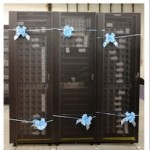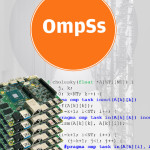In this video from the OpenPOWER Summit, Dr. Mike Ashworth from the STFC Hartree Centre presents: Driving Innovation at the Hartree Centre with the OpenPOWER Architecture. “The STFC Hartree Centre has been established with a focus on economic impact through our collaborations with UK industry, offering access to HPC and data intensive systems, code development expertise and collaborative research opportunities. Through a major partnership with IBM we have been porting and evaluating our key application codes on the OpenPOWER architecture seeking to leverage performance and productivity gains for the benefit of our key customers. We will describe progress in porting and optimization of applications from a range of science areas.”
Archives for April 2016
Job of the Week: HPC Linux Engineer at Pfizer
Pfizer in Connecticut is seeking an HPC Linux Engineer in our Job of the Week. “We are seeking an accomplished Linux operations engineer with a comprehensive understanding of Linux including systems administration, application tuning and optimization with a strong working knowledge of multiple scientific domains in support of HPC users. The candidate should have demonstrated troubleshooting abilities and would lead our efforts in enabling and maintaining leading edge scientific applications.”
Video: Lustre 2.9 and Beyond
In this video from LUG 2016, Andreas Dilger from Intel presents: Lustre 2.9 and Beyond. “I do this presentation every year and I think it is important to focus on features that are going to be available in the short term.”
Designing Interfaces in Materials with Supercomputers
Designing materials atom-by-atom has long been a science fiction dream. Georg Schusteritsch and Chris Pickard of the University of Cambridge are bringing science fiction one step closer to reality using the UK National Supercomputing Facility, ARCHER to reveal the interfaces forming within and between materials. “We have developed a general first-principles approach to predict the crystal structure of interfaces in materials, a technique that represents a major step towards computationally developing materials with specially designed interfaces.”
Quad-Core Maker Board Uses BSC Programming Model OmpSs
Parallel programming software developed at the Barcelona Supercomputing Center is being used as part of a successful kickstarter campaign for a maker board with 10 times the power of the Rasberry PI 3. “Developed at BSC, the OmpSs parallel programming model is used on the new UDOO X86 board, which reached its Kickstarter funding target of €100,000 in under seven hours. UDOO X86 combines a powerful maker board and an Arduino 101-compatible platform, all embedded on the same board. It can be used for a range of applications, such as gaming, video streaming, graphic design editing, Internet of Things applications, or as a toolbox for makers.”
EuroMPI Conference Partners with Women in HPC to Bolster Diversity
Over at the Women in HPC Blog, Daniel Holmes from EPCC writes that the EuroMPI Conference is partnering with Women in HPC to increase diversity in high performance computing.
HPC and SMEs – The Fortissimo Initiative
“Fortissimo will make advanced simulation more easily accessible, particularly to SMEs, through the realization of a “one-stop shop” where hardware, expertise, applications, visualization and tools will be easily available and affordable on a pay-per-use basis. In doing this, it will create and demonstrate a sustainable commercial ecosystem where actors at all levels in the value chain can realize sufficient commercial benefit to enable that ecosystem to persist independently of EU funding and continue to provide affordable services to manufacturing industry, particularly SMEs.”
Video: HPE Persistent Memory
“HPE Persistent Memory products deliver the performance of memory with the persistence of traditional storage. The HPE 8GB NVDIMM Module is the first offering in the HPE Persistent Memory product category. Customers are looking for offerings that enable faster business decisions and the HPE Persistent Memory portfolio delivers outstanding performance to put data to work more quickly in your business. The HPE 8GB NVDIMM Module has the resiliency you have come to expect from storage technology by utilizing higher endurance DRAM and components that help verify data is moved to non-volatile technology in the event of a power loss.”
Report: US At Risk of Falling Behind in Supercomputing
Today the Information Technology and Innovation Foundation (ITIF) published a new report that urges U.S. policymakers to take decisive steps to ensure the United States continues to be a world leader in high-performance computing. “While America is still the world leader, other nations are gaining on us, so the U.S. cannot afford to rest on its laurels. It is important for policymakers to build on efforts the Obama administration has undertaken to ensure the U.S. does not get out paced.”
Interview: Jeff Bonwick on the Secret Sauce behind DSSD
We caught up Jeff Bonwick from DSSD to learn more about their exciting storage technology for HPC. “Our mission statement was four words: fastest storage on earth. That was our singular goal from day one, which gave the team incredible focus and clarity. Whenever we had to make a tradeoff between performance and something else, performance always won. Always. And it just so happens that when you aim for performance, density comes along for the ride because the more flash chips you have working in parallel, the faster it goes.”













